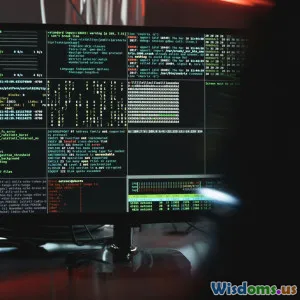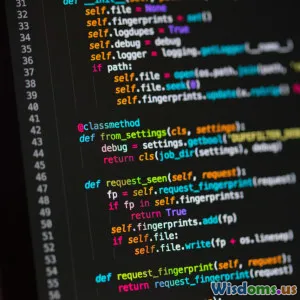
Can DevSecOps Replace Traditional Security Teams
10 min read Explore if DevSecOps can fully replace traditional security teams, uncovering benefits, limitations, and real-world integration strategies. (0 Reviews)
Can DevSecOps Replace Traditional Security Teams?
The cybersecurity landscape is evolving at breakneck speed. As businesses strive to accelerate software delivery without compromising safety, a new paradigm—DevSecOps—has emerged. But amid the enthusiasm, an important question persists: Can DevSecOps replace traditional security teams altogether? This article dives deep into this query, exploring what DevSecOps means, how it compares to traditional security approaches, and where the future of cybersecurity staffing might be heading.
Introduction
Traditional security teams have long been the fortress guarding an organization's digital assets. They operate as watchdogs—deploying policies, scanning for vulnerabilities, responding to incidents, and managing risk at an enterprise level. Yet, as software development has accelerated, security has sometimes struggled to keep pace, resulting in costly breaches and compliance challenges.
Enter DevSecOps, often described as "security as code," which integrates security practices directly within the DevOps workflow. Advocates claim DevSecOps automates security testing, promotes collaborative responsibility, and embeds security early into the development lifecycle. But do these innovations eliminate the need for seasoned security professionals? Or is a hybrid model the best path forward?
This article unpacks these concerns by outlining the scope of traditional security teams, detailing the ins and outs of DevSecOps, and examining how the two complement or conflict, supported by anecdotal evidence and industry analysis.
Understanding Traditional Security Teams
Roles and Responsibilities
Traditional security teams typically encompass a broad spectrum of roles, including security analysts, architects, incident responders, compliance officers, and penetration testers. Their primary functions include:
- Risk Management: Continuously assessing threats and vulnerabilities across the entire organization.
- Policy Development: Establishing security best practices, governance frameworks, and compliance controls.
- Incident Response: Detecting, mitigating, and recovering from security breaches.
- Security Training and Awareness: Educating employees on risks and safe practices.
- Penetration Testing and Auditing: Conducting manual and automated tests to identify system weaknesses.
Key Strengths
Traditional teams excel in tackling complex threats requiring cross-system visibility, contextual understanding, and strategic prioritization. Their expertise is crucial for navigating regulatory environments and ensuring organizational resilience.
Limitations in Modern Development Landscapes
Despite their strengths, traditional security teams often grapple with resource constraints and siloed operations. Often seen as a 'gatekeeper,' their manual security checks can slow down Dev and Ops teams, creating friction and threatening agile delivery models.
What is DevSecOps?
Definition and Philosophy
DevSecOps melds development (Dev), operations (Ops), and security (Sec) into a cohesive pipeline, aiming to deliver secure software rapidly. It democratizes security by distributing responsibility among developers, integrating automated testing, and embedding security tools throughout the Continuous Integration/Continuous Deployment (CI/CD) process.
Key Practices
- Shift Left Security: Incorporating security practices at the earliest stages—design and coding.
- Automation of Security Testing: Utilizing tools for static code analysis (SAST), dynamic application security testing (DAST), and dependency scanning in real time.
- Continuous Monitoring: Leveraging telemetry and analytics during deployment and runtime to detect anomalies.
- Collaborative Culture: Encouraging shared responsibility and ongoing communication across Dev, Sec, and Ops teams.
The Benefits
Organizations adopting DevSecOps report:
- Earlier Vulnerability Detection: According to a 2022 Gartner study, shift-left practices can reduce security defects in production by over 50%.
- Faster Remediation Cycles: Automation speeds patching and reduces manual error.
- Improved Developer Security Awareness: Training plus automation empowers developers to write safer code.
- Cost Reduction: Fixing issues pre-release is significantly less expensive; IBM estimates resolved vulnerabilities during design cost 30 times less than post-deployment breaches.
These reasons make the DevSecOps approach attractive, especially in industries aiming for digital transformation and rapid innovation.
Can DevSecOps Replace Traditional Security Teams?
The Automation Factor: Enabler, Not Eliminator
Automation tools embedded in DevSecOps pipelines can handle many routine security tasks—code scanning, compliance checks, incident alerts—effectively reducing manual workload. However, these tools lack the contextual judgment required for nuanced decision-making.
Complex Threat Landscape Needs Human Expertise
Cyber threats have evolved beyond simple vulnerabilities.
Sophisticated attacks like Advanced Persistent Threats (APTs), social engineering, zero-day exploits, and insider threats often require deep analysis, threat hunting, and incident investigation capabilities—areas where highly-skilled security professionals excel.
Cultural Challenges
DevSecOps relies upon developers and operations staff buying into shared security ownership. However, not all organizations have mature security cultures or the bandwidth for continuous security education.
Without a centralized knowledgeable team guiding policy and advanced strategy, ad hoc or insufficient security implementation can occur.
Regulatory and Compliance Demands
Navigating complex compliance regimes like GDPR, HIPAA, or PCI-DSS requires specialized knowledge. Security teams ensure policies and controls meet legal standards and handle audit processes.
DevSecOps automation can assist here but does not replace the expert judgment and coordination traditional teams provide.
Real-World Example: Netflix
At Netflix, an early and high-profile adopter of DevSecOps, the security team integrates closely with developers but still exists as a distinct entity. Their approach combines automation for continuous security assessments with human experts conducting threat modeling and incident response.
This model showcases DevSecOps empowering but not replacing security teams.
A Synergistic Future: Hybrid Security Models
Rather than an either-or choice, many experts advocate for a synergistic approach where DevSecOps augments traditional security functions.
DevSecOps as a Force Multiplier
By automating routine security tasks and embedding best practices within development workflows, DevSecOps empowers traditional security teams to focus on strategic concerns like threat hunting, incident handling, and governance.
Building Security Champions
Traditional teams can train developer "security champions" who act as liaisons, bridging the gap between security objectives and day-to-day coding practices, blending expertise organically within teams.
Examples
- Capital One combined extensive automation (DevSecOps) with a centralized security team, drastically reducing vulnerabilities while maintaining strong governance.
- Adobe uses DevSecOps pipelines alongside robust security operations centers to respond swiftly to threats while integrating security early in design.
Challenges and Recommendations for Organizations
Challenges
- Skill Gaps: Developers may lack deep security knowledge; traditional teams may resist cultural shifts.
- Tool Integration Complexity: Not all pipelines easily integrate security tools.
- Scalability: Small companies may struggle to build specialized teams.
Recommendations
- Invest in Training and Culture: Promote security awareness shifting left.
- Maintain a Core Expert Team: To manage advanced threats and compliance.
- Leverage Automation Wisely: Free human expertise to focus on complex tasks.
- Establish Clear Accountability: Define roles in the shared responsibility model.
Conclusion
DevSecOps marks a transformative step in securing modern software development, embedding security into the DNA of agile teams through automation and collaboration. However, the compelling rise of DevSecOps does not herald the end for traditional security teams.
The nuanced threat landscape, compliance necessities, and need for strategic response capabilities ensure expert security professionals remain indispensable. Rather than replacement, the future lies in collaboration: traditional security teams augmenting DevSecOps practices to deliver resilient, compliant, and secure software efficiently.
Organizations should embrace this hybrid model, investing in cultural integration, training, and balanced automation to realize the best of both worlds. In doing so, they can build robust defenses that keep pace with innovation and evolving cyber threats.
References:
- Gartner, "Shift Left Security Practices," 2022.
- IBM Security, "Cost of a Data Breach Report," 2023.
- Netflix Technology Blog, "Securing a Global Streaming Giant," 2021.
- Capital One Security Case Study, 2022.
Author's Note: Staying informed and adaptive is key. Whether you’re a security professional, developer, or executive, integrating DevSecOps intelligently is essential to winning the cybersecurity challenge today and tomorrow.
Rate the Post
User Reviews
Popular Posts


















